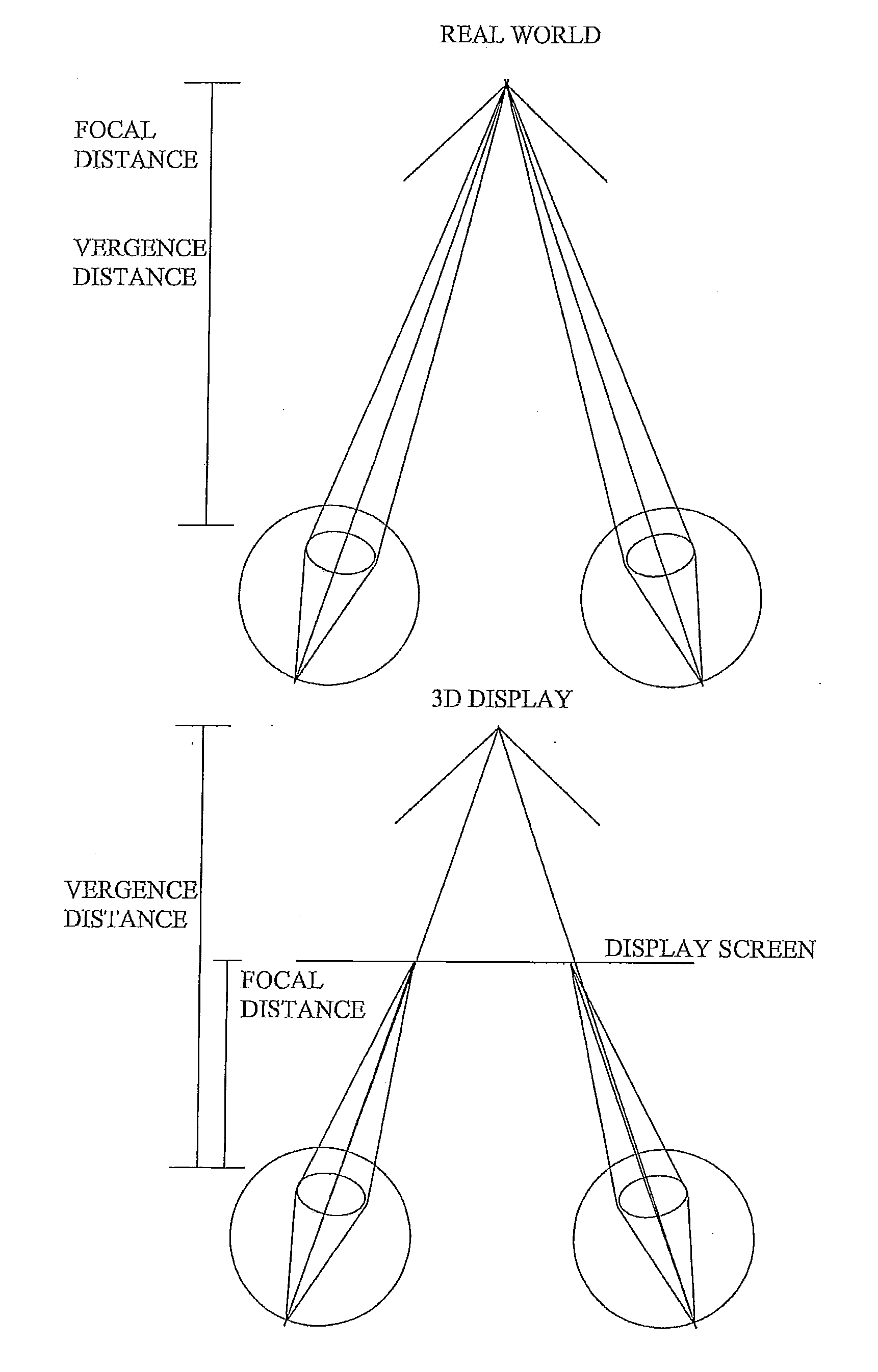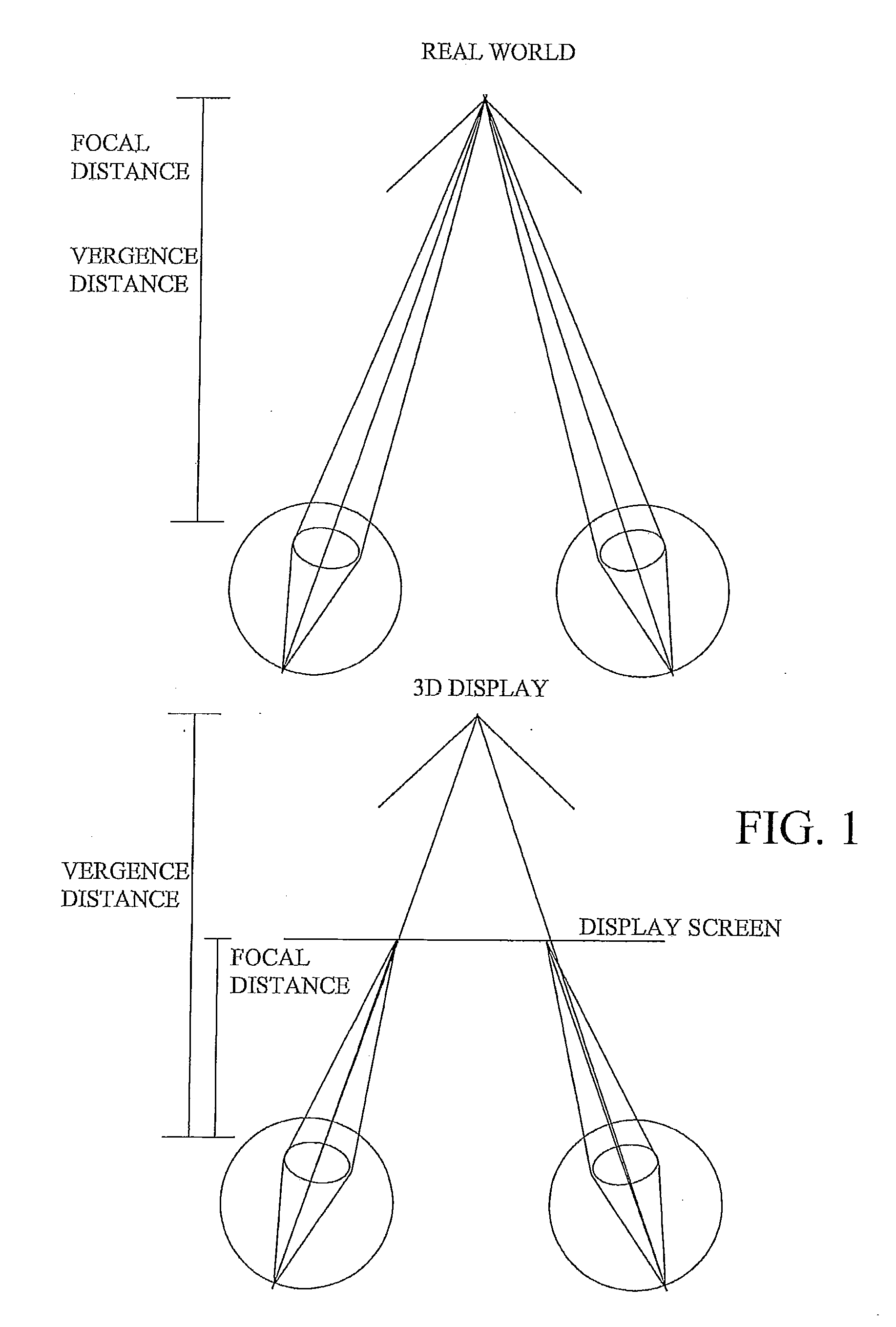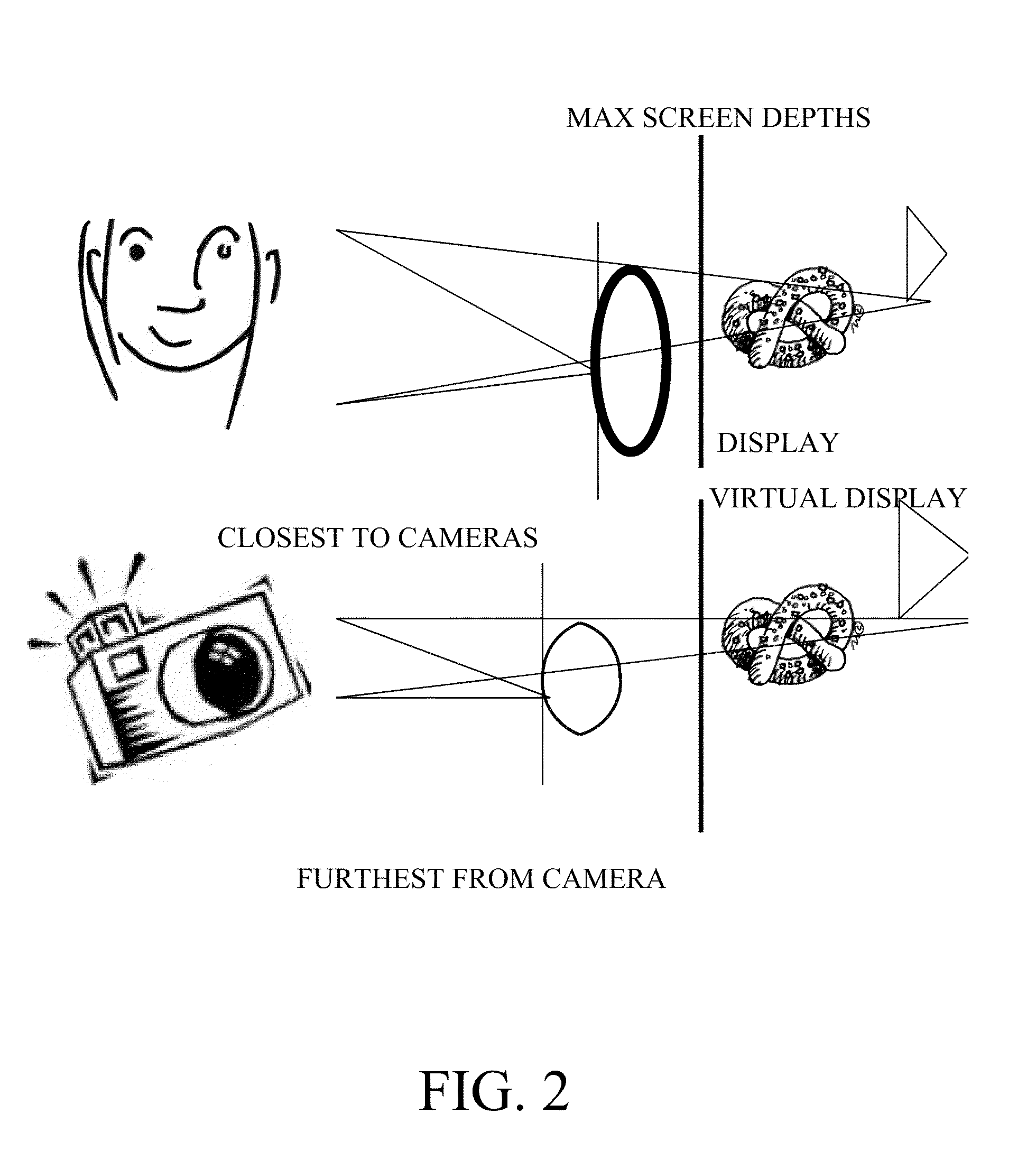Remote user control for stereoscopic display
a stereoscopic display and user-controlled technology, applied in the field of remote control of stereoscopic content, can solve problems such as headaches, headaches, eye strain, and sometimes nausea of observers
- Summary
- Abstract
- Description
- Claims
- Application Information
AI Technical Summary
Benefits of technology
Problems solved by technology
Method used
Image
Examples
Embodiment Construction
[0014]To reduce eye discomfort, it is preferable that the contents of a stereoscopic scene are within a range of depths that would result in a reduced conflict between vergence and accommodation. This range is preferably the depth of focus of the eye, which may be around 0.66 (±0.33) diopters (from −0.33 to +0.33 range) or other suitable values. In addition, this range may depend on the particular viewer of the display. Accommodation throughout this range of depths would not result in significant detectable blurring of images. Then the blur and vergence signals to accommodation would not be in as much conflict with each other, thus reducing viewer discomfort. This range of depths may be referred to as Percival's zone of comfort (PZC) as determined by the Percival's criterion of comfortable binocular vision. In general, the zone of comfort describes fatigue, eyestrain, and / or discomfort.
[0015]In the stereo-cinema industry, general practice in the production of stereo content is movin...
PUM
 Login to View More
Login to View More Abstract
Description
Claims
Application Information
 Login to View More
Login to View More - R&D
- Intellectual Property
- Life Sciences
- Materials
- Tech Scout
- Unparalleled Data Quality
- Higher Quality Content
- 60% Fewer Hallucinations
Browse by: Latest US Patents, China's latest patents, Technical Efficacy Thesaurus, Application Domain, Technology Topic, Popular Technical Reports.
© 2025 PatSnap. All rights reserved.Legal|Privacy policy|Modern Slavery Act Transparency Statement|Sitemap|About US| Contact US: help@patsnap.com



